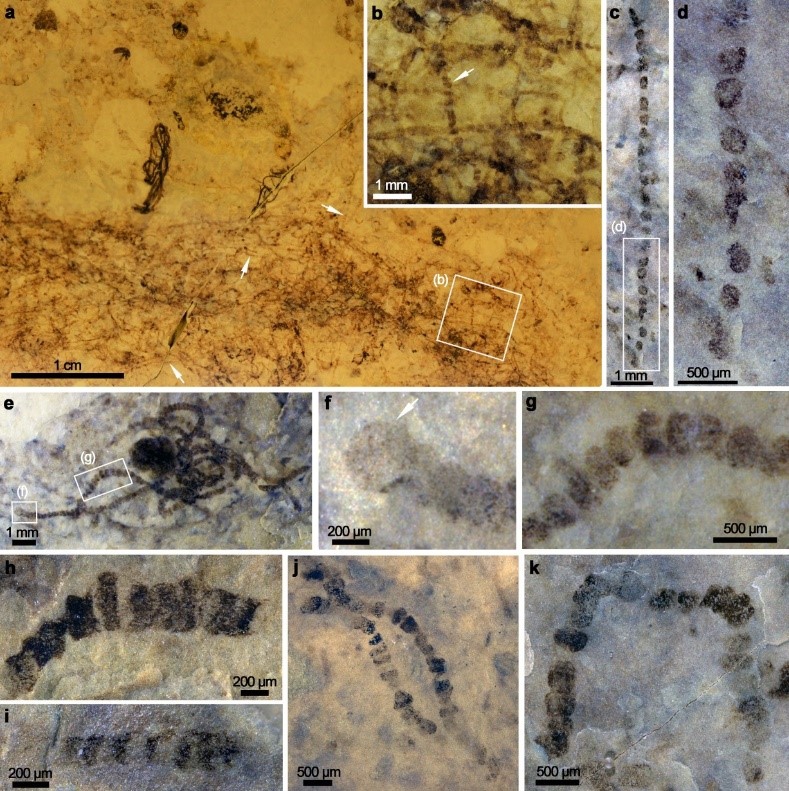
For much of the earth history, cyanobacteria were the only source of biogenic oxygen and a major source of fixed carbon and nitrogen. However, it is still not clear when cyanobacteria began to fix nitrogen. The discovery of new filamentous cyanobacterial fossil from ca. 1000–720 million-year-old rocks in North China has brought dawn for the tracking of the first nitrogen-fixing cyanobacteria. The results were published in Current Biology with the title "Nitrogen-fixing heterocystous cyanobacteria in the Tonian Period".
A team from NIGPAS and Virginia Tech in the United States collected hundreds of specimens from a fossiliferous horizon in the Tonian Liulaobei Formation in Shouxian, Anhui Province, East China. The new fossil was a mat-forming, filamentous, multicellular cyanobacterium that grew by binary cell division, reproduced by fragmentation, weathered adverse conditions by akinetes, and likely fixed nitrogen in specialized heterocysts.
Anhuithrix magna represents a compelling record of akinete-forming and implicitly heterocystous and diazotrophic cyanobacteria, and attests to the evolution of cellular differentiation among multicellular cyanobacteria in the Tonian Period. As an akinete-bearing cyanobacterium, it provides a minimum age estimate of the divergence of subsections IV+V, challenges molecular clock estimates that place this divergence at ~500 Ma, and places a firm constraint on the evolution of akinetes and heterocysts. Because nitrogenase is irreversibly inactivated by the presence of free oxygen, the evolution of heterocysts may be an evolutionary response to provide a physical shelter for nitrogenase as pO2 rose to levels that can inhibit the activity of nitrogenase. Anhuithrix magna may offer an independent constraint on the redox condition of the Tonian oceans.
Download:
